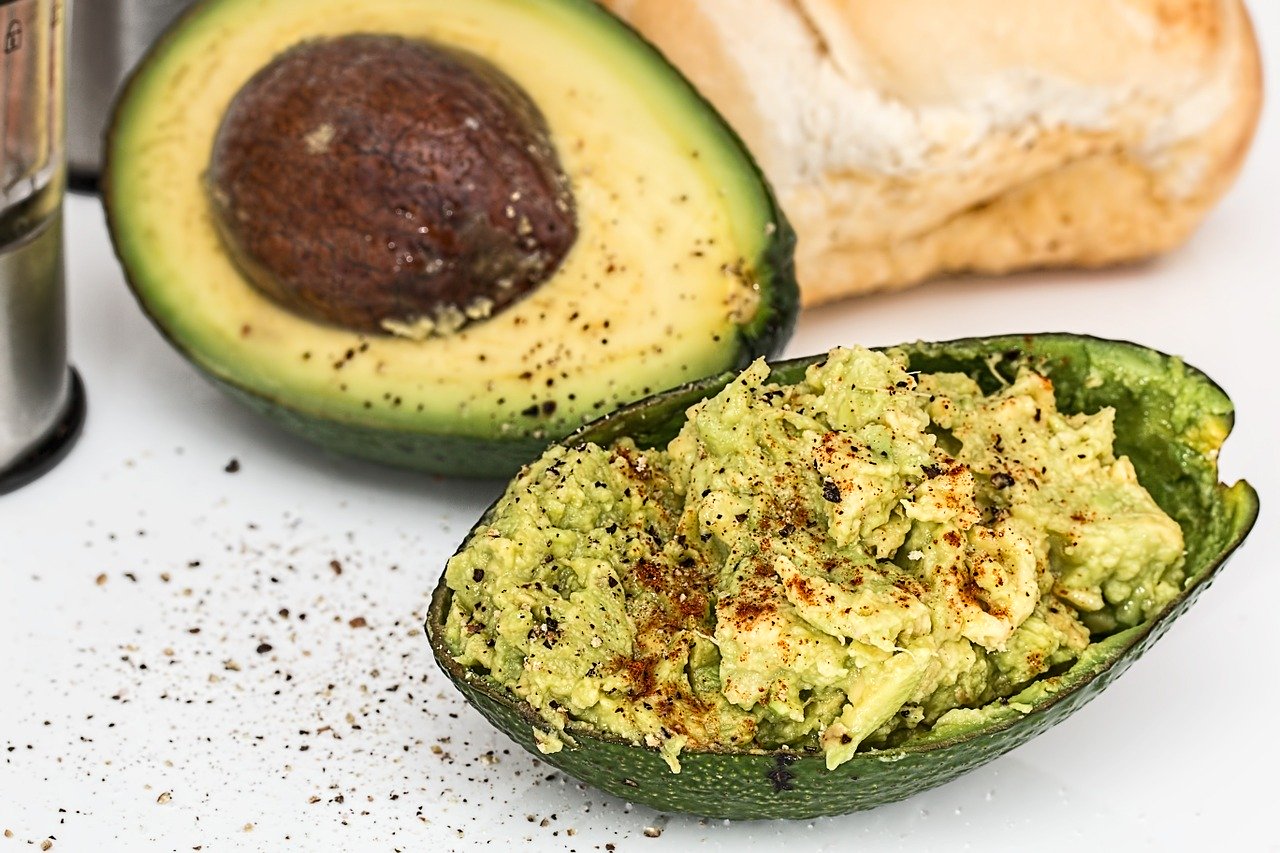Diet & Nutrition
Jul 13, 2020

Avocados have become a popular food in recent years and with good reason! They are full of healthy fats, also known as monounsaturated fats. Switching out foods containing saturated fats (such as butter, mayonnaise or cheese) for unsaturated fats may help improve cholesterol levels.
This is important because cholesterol is a fatty substance that can build up and clog you blood vessels, putting you at higher risk for heart attack or stroke. Avocados also contain dietary fiber which is beneficial for digestion, as well as other nutrients and vitamins necessary for good health.
When selecting avocados, gently squeeze to test its firmness. Unripe avocadoes will feel firm when squeezed and will generally have a brighter green color. These avocados can be purchased and stored at room temperature for approximately 4-5 days until they are fully ripe. If the avocado feels slightly soft when squeezed (but not mushy) then it is ripe and ready to eat. If you do not plan to eat it that same day, you can store it in the refrigerator for 1-2 days to prevent it from overripening (overripened avocados will be dark in appearance, feel very soft/mushy to touch and have brown spots throughout the flesh when sliced opened). It’s best to purchase avocados when they are in season, which in the U.S. is from May through August.
To prepare an avocado, follow these steps:
1. Wash it: Wash thoroughly under cold running water (although the peel is inedible and will be discarded, this is still an important step for all produce!)
2. Cut it: Place the avocado on a cutting board set on a secure surface. Holding the avocado in one hand, use a knife to slowly slice it down the center lengthwise around the seed. Once you have sliced the avocado lengthwise all the way around the center seed, use both hands to twist the two halves apart from each other.
3. Deseed it: Remove the seed by using a spoon to gently scoop the seed away from the flesh of the fruit.
4. Peel it: The outer skin of a ripe avocado will easily separate when pulled away from the flesh of the fruit. Alternatively, you can use a spoon to scoop out the flesh. It should be a light green color with a slightly soft and creamy texture. Cut away any dark/brown spots on the fruit as necessary. The avocado is then ready to be eaten as is or used in a recipe (see ideas below).
July 31 is National Avocado Day, so celebrate all month long by experimenting with the variety of ways in which you can incorporate this superfood into your diet:
Resources:
https://www.eatright.org/food/nutrition/dietary-guidelines-and-myplate/choose-healthy-fats
https://loveonetoday.com/how-to/how-to-cut-slice-peel-pit-avocados/
Courtesy of Whitney Martin, VCU Health dietetic intern. Visit our Diet and Nutrition blog for more recipes and information about the connection between diet and cancer survivorship.
Written by: Massey Communications Office
Center News & Funding, Community Engagement & Health Equity, Prevention & Control, Diet & Nutrition
2024 Massey seed grant recipients grow community-led health initiativesMay 28, 2024
Diet & Nutrition, Prevention & Control
Summer safety: Can grilled meats produce cancerous chemicals?Jun 29, 2023
Center News & Funding, Community Engagement & Health Equity, Research, Prevention & Control, Clinical, Adult Outpatient Pavilion, Diet & Nutrition, Technology
Commonwealth celebrates Massey Cancer Center’s comprehensive designation: “If you didn’t know about Massey—now you know”Jun 09, 2023

Treatments in clinical trials may be more effective or have fewer side effects than the treatments that are currently available. With more than 200 studies for multiple types of cancers and cancer prevention, Massey supports a wide array of clinical trials.

Massey supports hundreds of top cancer specialists serving the needs of our patients. Massey’s medical team provides a wealth of expertise in cancer diagnosis, treatment, prevention and symptom management.